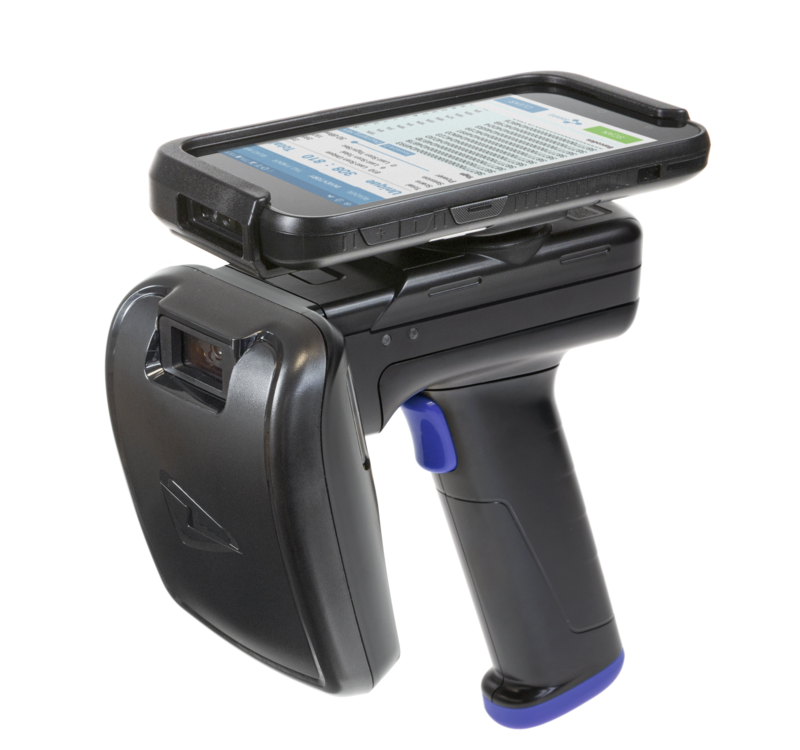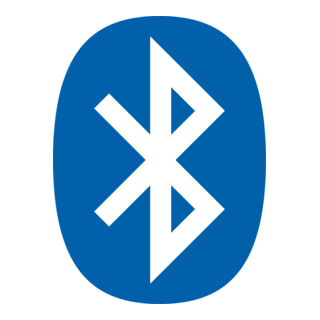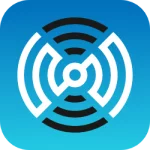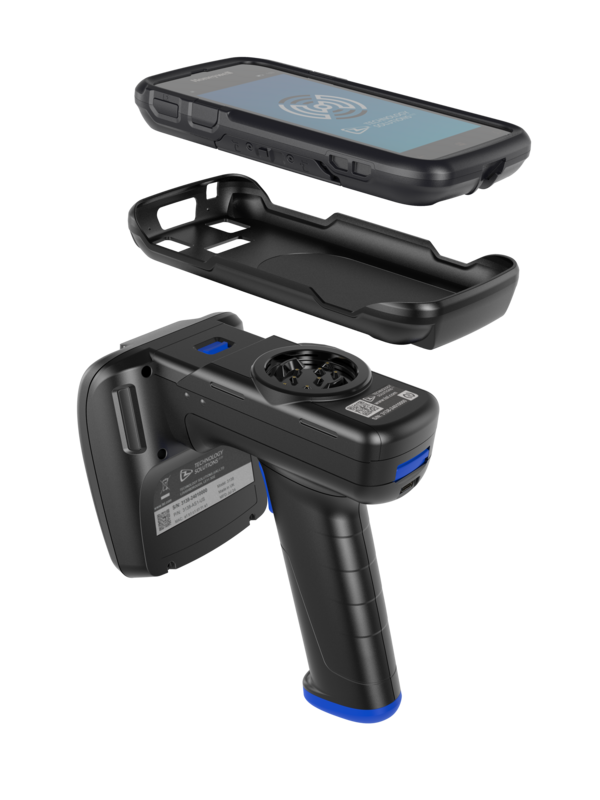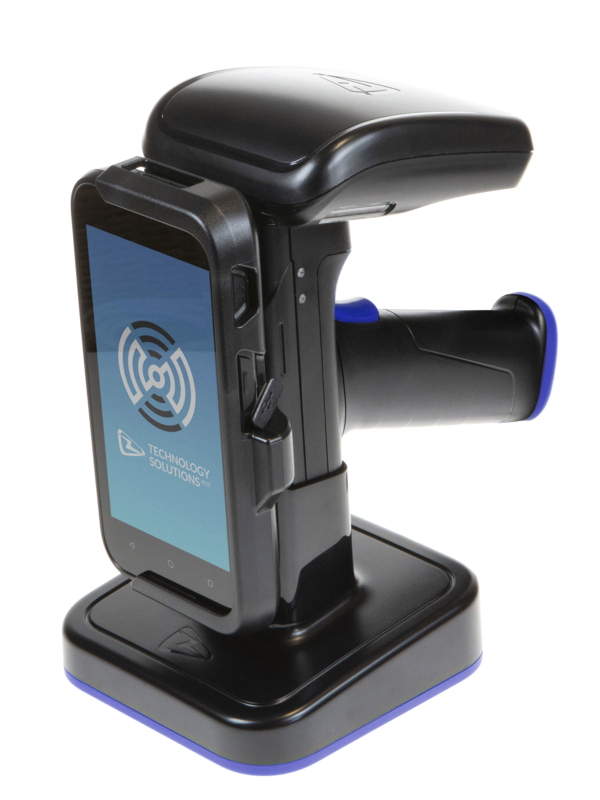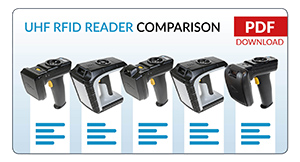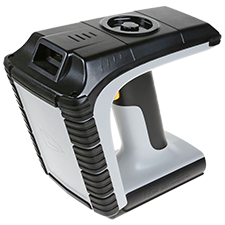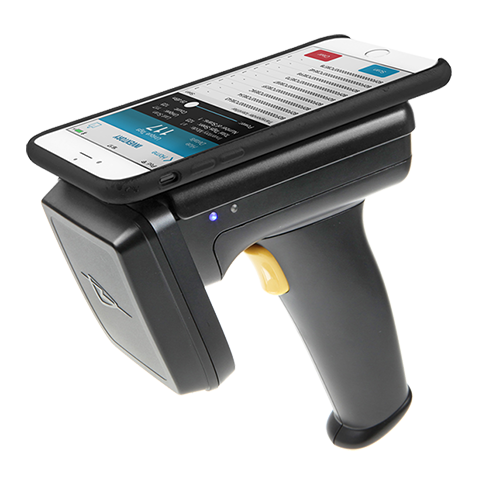Physical and Environmental Characteristics
Dimensions (with trigger handle):
158 x 98 x 170 mm (LxWxH)
Weight:
550g (including Power Handle)
User feedback:
Speaker, vibration motor, LED – user configurable.
Power:
Rechargeable 25.4Wh, 7.3V Lithium Polymer battery pack
Minimum operating time1:
Light use2: 20 hrs
Moderate use3: 11 hrs
Heavy use4: 6.5 hrs
Input Rating:
USB-C with Power Delivery (40W with ePop-Loq, 20W reader only)
Performance Characteristics
RFID engine:
TSL® custom module with embedded Impinj E710.
Communication protocols:
TSL® ASCII 3 parameterised command set.
Security features:
HID OmniKey™ Security Chip
Memory:
Embedded 32GB5 storage memory – store up to 500 million date and time stamped EPCs.
Compatible Host devices (Bluetooth®):
Any Bluetooth® Host6 supporting the Serial Port Profile (SPP) or Human Interface Device (HID) profile (Android, iOS, Linux, Mac, Windows). Comparison of Bluetooth® modes for TSL® UHF Readers.
Compatible Host devices (USB):
Any USB host with USB CDC support (Windows, Linux, Mac, Android).
Environmental
Operating Temperature:
-10°C to 50°C (14°F to 122°F).
Charging Temperature:
5°C to 40°C (41°F to 104°F).
Storage Temperature:
Less than 1 month at at -20 to +45°C (-4°F to 113°F).
Less than 6 months at -20°C to +35°C (-4°F to 95°F)
Drop specification:
Multiple drops to concrete: 4 ft./1.2 m ambient, 3ft / 0.9m across the operating temperature range..
Tumble:
1000 0.5 metre tumbles at room temperature (2000 cycles).
Electrostatic Discharge (ESD):
± 15kVdc air discharge; ± 8kVdc contact discharge.
MIL-STD 810F:
Meets and exceeds applicable MIL-STD 810F for drop, tumble and sealing.
RFID Performance
Field:
150-degree forward facing (approx.)
Antenna:
Right Hand Circularly Polarised with optional 2D scanner.
Frequency Range:
EU: 865-868MHz
916-919MHz
US: 902-928MHz
Maximum Output Power:
Up to 30 dBm (region dependent)
+ 4.0 dBiC Antenna.
Barcode Scanning
Optional 2D Barcode Engine:
Optional TSL® custom 2D Barcode Scan Engine module.
Sensor Resolution:
1280 x 960 pixels, rolling shutter
Field of View:
Horizontal: 44.5°, Vertical: 33.5°.
Focal Distance:
From front of engine: 15.24 cm (6 in.)
Symbologies Supported:
1D: All major codes
2D: PDF417, MicroPDF417, Composite, RSS, TLC-39, Datamatrix, QR code, Micro QR code, Aztec, MaxiCode Postal Codes: US PostNet, US Planet, UK Postal, Australian Postal, Japan Postal, Dutch Postal (KIX).
Communication
Bluetooth®:
Bluetooth v4.2 compliant (v5.1 compatible)
Bluetooth GATT Services:
Device Information Service
Battery Service
HID over GATT
Serial over GATT (TSL)
Bluetooth Frequency Range:
Bluetooth Profiles:
SPP Profile, HID Profile, Apple iAP2, Bluetooth Low Energy.
Bluetooth Pairing:
Simple Secure Pairing, NFC OOB Pairing.
Physical host device connection:
Direct Connection via ePop-Loq® cases (separate purchase).
Peripherals and Accessories
External interface:
USB-C connector or custom 8-Way Power-Pin connector (for use with docking cradle)
Power supply management:
Separate purchase (see accessories PN)
Other accessories available:
Adapter mounts for a variety of smartphones and handheld terminals.
Regulatory
Regions
EU (CE), USA (FCC), Canada (see datasheet for details)
EMC
EN 55032: 2015+A11:2020, Class A
EN 6100-3-2: 2014, Class A
EN IEC 61000-3-2: 2019+A1:2021, Class A
EN 61000-3-3: 2013+A1:2019+A2:2021
EN 55035: 2017+A11:2020
EN 301 489-1 V2.2.3 (2019-11)
EN 301 489-3 V2.3.2 (2023-01)
EN 301 489-17 V3.2.4 (2020-09)
47 CFR FCC Part 15, Subpart B, Class A
ANSI C63.4-2014
ANSI C63.4a-2017
ICES-003: 2020 Issue 7, Class A
ICES-Gen: 2018 Issue 1 +A1:2021
ANSI C63.4-2014 amended as per ANSI C63.4a-2017
RF
EN 302 208 V3.3.1 (2020-08)
47 CFR FCC Part 15, Subpart C (Section 15.247)
ANSI C63.10-2013
Canada RSS-247 Issue 3, August 2023
Canada RSS-Gen Issue 5, Amendment 2, February 2021
ANSI C63.10-2013
RF Exposure
EN 50566:2017
EN 62209-2:2010/A1:2019
IEC 62209-2:2010/AMD1:2019
EN 50663:2017
EN 62479:2010
EN 50364:2018
EN 62369-1:2009
IEEE Std 1528:2013
KDB 865664 D01 v01r04
KDB 865664 D02 v01r02
KDB 447498 D01 v06
ISED RSS-102 Issue 5:2015/AMD1:2021
IEC/IEEE 62209-1528:2020
Electrical Safety
IEC 62368-1:2018
UL 62368-1:2019
CSA C22.2 No. 62368-1:19
Environmental
2011/65/EU (RoHS 2)
Restriction of the use of certain Hazardous Substances in electrical and electronic equipment
2015/863 (RoHS 3)
Amendment to Annex II of 2011/65/EU
EN 62479:2010
1
Minimum operating time figures are based on new units that have been stored,
charged and operated within the stated Environmental Specifications.
Units stored over 3 months must be recharged every 3 months.
Number of transponders in the environment affects minimum operating time.
2
Light Use: Continuous RFID inventories for 20s of every 120s
3
Moderate Use: Continuous RFID inventories for 10s of every 30s
4
Heavy Use: Continuous RFID inventories for 59s of every 60s
5
Up to 256GB microSD card storage supported. 32GB fitted as standard
5
Compatible Bluetooth® stack required in the Host device
6
Tag Read/Write performance is dependent on tag type, items tagged,
number of tags in the field and other radio and environmental factors
